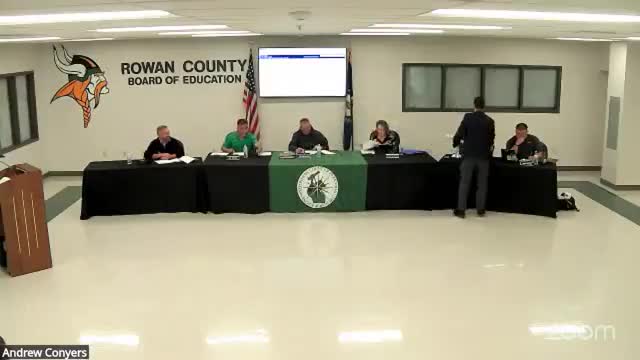Finance Expert Explains School Borrowing Capacity and Debt Calculation Methods
May 21, 2025 | Rowan County, School Boards, Kentucky
This article was created by AI summarizing key points discussed. AI makes mistakes, so for full details and context, please refer to the video of the full meeting. Please report any errors so we can fix them. Report an error »

During the May 2025 Regular Meeting Part 2 held in Kentucky on May 21, a significant focus was placed on understanding school finance, particularly the calculation of borrowing capacity for school districts. The discussion, led by a finance expert, aimed to demystify the complexities surrounding how schools determine their ability to take on debt, akin to how individuals assess their mortgage options with a bank.
The speaker likened the process of calculating borrowing capacity to a homeowner meeting with a loan officer. This analogy highlighted the importance of assessing current debt obligations and revenue streams before determining how much additional debt can be responsibly managed. The expert emphasized that understanding these financial principles is crucial for school boards, especially in light of upcoming projects and financial planning.
A key point of the presentation was the structure of school bonds, which are similar to mortgages but typically have shorter terms. The expert explained that refinancing opportunities can arise when interest rates decrease, allowing districts to save money without extending their debt terms. This was illustrated with examples of previous bond issues, showing how refinancing can benefit school finances.
The discussion also touched on the timing of debt payments, noting that the heaviest payments typically occur in the early years of a loan. This pattern is consistent across various types of debt, including personal loans and municipal bonds. The speaker pointed out that understanding this trend is essential for planning future borrowing and ensuring that districts can meet their financial obligations while still investing in educational needs.
As the meeting progressed, attendees were encouraged to ask questions, fostering an interactive environment aimed at enhancing understanding of school finance. This focus on financial literacy among board members is expected to have lasting implications for how school districts manage their resources and plan for future projects.
In conclusion, the meeting underscored the importance of financial acumen in school governance. As districts navigate their borrowing capacities and financial obligations, the insights shared during this session will likely influence their strategic planning and decision-making processes in the years to come.
The speaker likened the process of calculating borrowing capacity to a homeowner meeting with a loan officer. This analogy highlighted the importance of assessing current debt obligations and revenue streams before determining how much additional debt can be responsibly managed. The expert emphasized that understanding these financial principles is crucial for school boards, especially in light of upcoming projects and financial planning.
A key point of the presentation was the structure of school bonds, which are similar to mortgages but typically have shorter terms. The expert explained that refinancing opportunities can arise when interest rates decrease, allowing districts to save money without extending their debt terms. This was illustrated with examples of previous bond issues, showing how refinancing can benefit school finances.
The discussion also touched on the timing of debt payments, noting that the heaviest payments typically occur in the early years of a loan. This pattern is consistent across various types of debt, including personal loans and municipal bonds. The speaker pointed out that understanding this trend is essential for planning future borrowing and ensuring that districts can meet their financial obligations while still investing in educational needs.
As the meeting progressed, attendees were encouraged to ask questions, fostering an interactive environment aimed at enhancing understanding of school finance. This focus on financial literacy among board members is expected to have lasting implications for how school districts manage their resources and plan for future projects.
In conclusion, the meeting underscored the importance of financial acumen in school governance. As districts navigate their borrowing capacities and financial obligations, the insights shared during this session will likely influence their strategic planning and decision-making processes in the years to come.
View full meeting
This article is based on a recent meeting—watch the full video and explore the complete transcript for deeper insights into the discussion.
View full meeting
